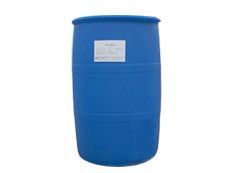With the continuous progress of ceramic industry, high-performance and high-quality household ceramics, building and sanitary ceramics, fine ceramics, porous ceramics, superplastic ceramics and nano ceramic composites emerge as the times require, among which ceramic additives play an important role.
Surfactant molecular ordered assemblies have been widely used in various industrial fields due to their various practical functions, such as emulsification, solubilization, wetting, adsorption, permeation, dispersion, defoaming, thickening and lubrication. It has been used in the production of traditional and special ceramics in ceramic industry. The preparation of ceramics generally has the following processes: powder preparation, powder mixing, molding, glazing and sintering, each step will affect the quality of ceramic products. Surfactant can improve the agglomeration of superfine powder, the uniformity of glaze and the performance of slurry. It has become the main additive in modern ceramic industry.

In order to make ceramics have some special functions, people design ceramic powder particles in order to endow them with some physical and chemical properties and meet the needs of preparing new ceramic materials, new structures and new products with strange properties. Superfine ceramic powder is the trend of high performance ceramic powder synthesis, but its huge surface energy and surface effect are easy to cause agglomeration phenomenon, and lose its advantages, usually need to carry out surface modification. Surface modification of ceramic powder is to treat the surface of powder by physical or chemical methods, so as to change the physical and chemical properties of powder surface purposefully, so as to effectively prevent the agglomeration of powder. After modification, the crystal structure, functional groups, surface energy, surface wettability, electrical property, surface adsorption and dispersion will be changed due to the change of surface properties, which can meet the needs of modern ceramic materials, technology and properties. Modification methods include coating method, precipitation reaction method, surface chemistry method and mechanochemistry method.
Surface chemical modification is to cover the surface of ceramic particles by chemical reaction or chemical adsorption between surfactant and the surface of ceramic particles, so as to make the surface of particles organic and complete the surface modification.
After the irregular or agglomerated SiC powder is treated with surfactant, the long molecular chain of surfactant is adsorbed on the surface defects and suspended bonds of particles, which accelerates the disintegration of large particles or agglomerated particles and improves the dispersion of SiC particles.
Zhou Jigao used adipic acid and stearic acid to modify the surface of nano zirconia ceramic powder The carboxyl group (- COOH) in stearic acid reacts with hydroxyl group (- OH) on the surface of Nano-sized Zirconia Particles, which is similar to the esterification reaction of acid and alcohol, and forms a monolayer on the surface of Nano-sized Zirconia Particles. After surface modification, the Nano-sized Zirconia ceramic powder changes from polar to non-polar. At the same time, due to the adsorption of monolayer on the powder surface, the interaction force between the powders (including intermolecular force and mechanical hinge force) is reduced, that is, the friction resistance of the powder flow is reduced, so the fluidity of the powder is improved.